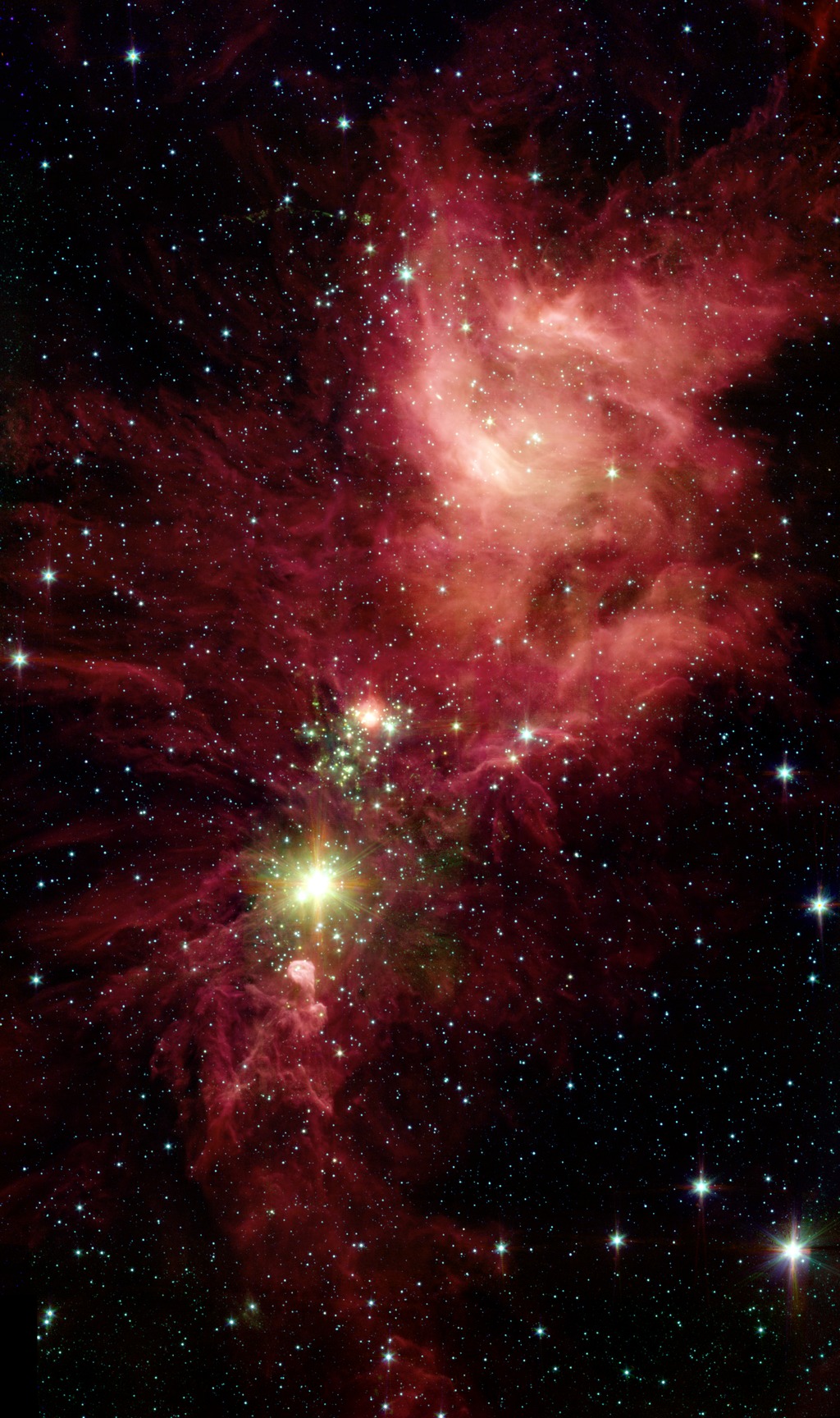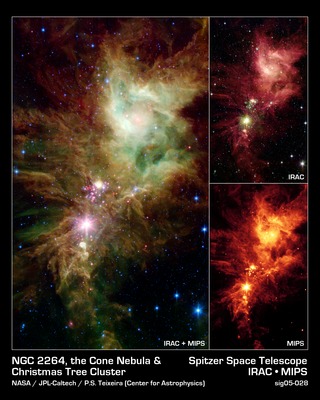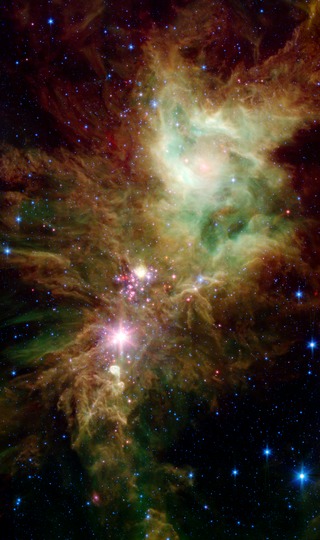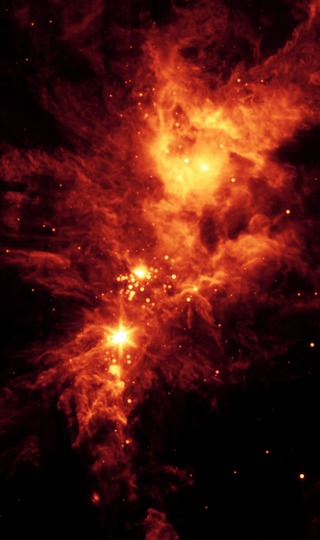
Credit: NASA/JPL-Caltech/P.S. Teixeira (Harvard-Smithsonian CfA)
Observation • December 22nd, 2005 • sig05-028b
sig05-028b
Newborn stars, hidden behind thick dust, are revealed in this image of a section of the Christmas Tree Cluster from NASA's Spitzer Space Telescope, as seen by Spitzer's Infrared Array Camera (IRAC). The stars appear to have formed in regularly spaced intervals along linear structures in a configuration that resembles the spokes of a wheel or the pattern of a snowflake. Hence, astronomers have nicknamed this the "Snowflake Cluster."
Star-forming clouds like this one are dynamic and evolving structures. Since the stars trace the straight line pattern of spokes of a wheel, scientists believe that these are newborn stars, or "protostars." At a mere 100,000 years old, these infant structures have yet to "crawl" away from their location of birth. Over time, the natural drifting motions of each star will break this order, and the snowflake design will be no more.
While most of the visible-light stars that give the Christmas Tree Cluster its name and triangular shape do not shine brightly in Spitzer's infrared eyes, all of the stars forming from this dusty cloud are considered part of the cluster.Like a dusty cosmic finger pointing up to the newborn clusters, Spitzer also illuminates the optically dark and dense Cone Nebula, the tip of which can be seen towards the bottom left corner of the image.
IRAC's near and mid-infrared eyes show that the nebula is still actively forming stars. The wisps of red are organic molecules mixed with dust, which has been illuminated by nearby star formation. The IRAC picture is a four-channel, composite, showing emission from wavelengths of 3.6 microns (blue), 4.5 microns (green), 5.8 microns (orange) and 8.0 microns (red).
About the Object
- Name
- NGC 2264 • Snowflake Cluster • Christmas Tree Cluster
- Type
- Nebula > Type > Star Formation
- Star > Grouping > Cluster
- Distance
- 2,700 Light Years
Color Mapping
| Band | Wavelength | Telescope |
| Infrared | 3.6 µm | Spitzer IRAC |
| Infrared | 4.5 µm | Spitzer IRAC |
| Infrared | 5.8 µm | Spitzer IRAC |
| Infrared | 8.0 µm | Spitzer IRAC |
Astrometrics
- Position (J2000)
- RA =6h 40m 9.4s
- Dec = 9° 18' 47.1"
- Field of View
- 33.2 x 56.1 arcminutes
- Orientation
- North is 1.6° right of vertical







